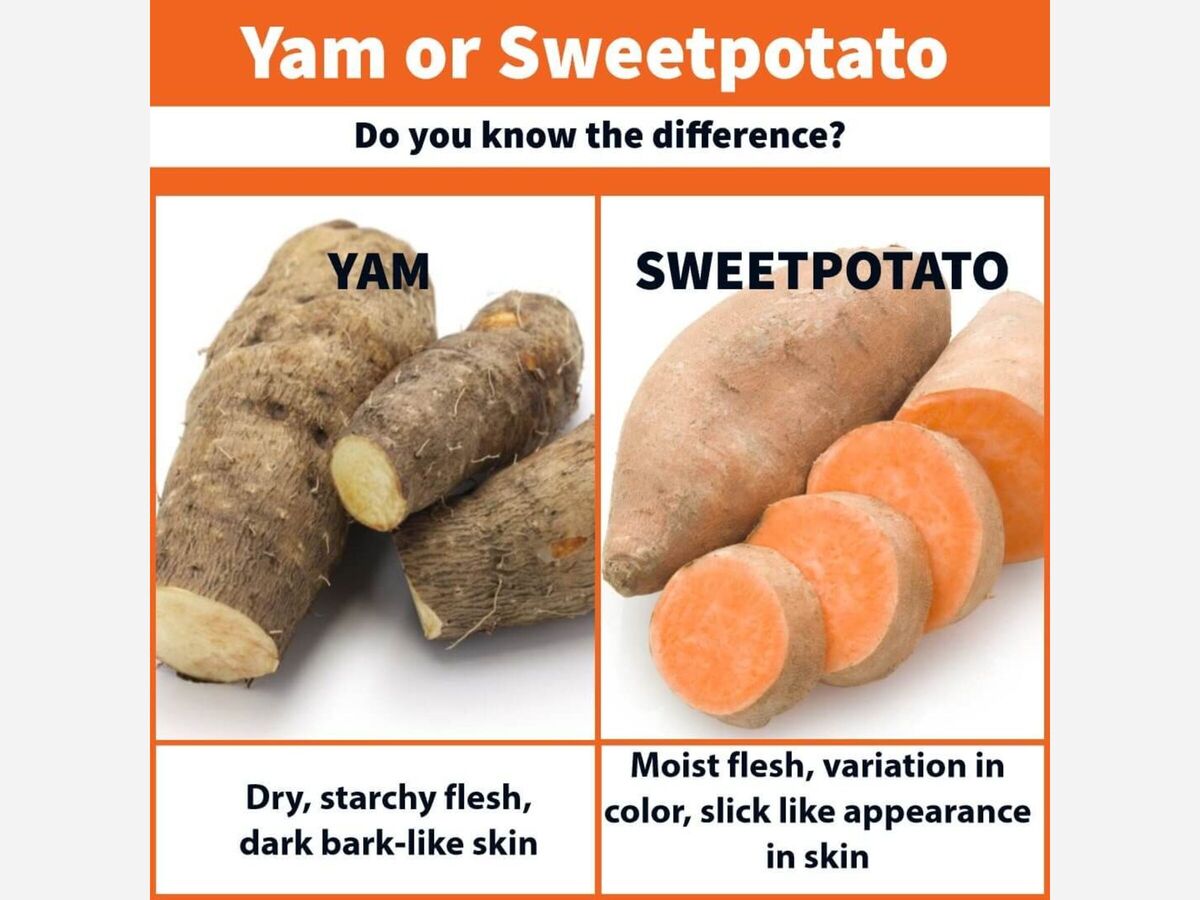Image

Do we choose big wonderfully fall like bright orange yams or, depending on who you ask, sweet potatoes?
While many use sweet potato and yam interchangeably, they are completely different vegetables. Even though both are starchy tubers, sweet potatoes and yams are not the same species or even in the same family.
Yams are in the family Dioscoreaceae, which contains hundreds of species of yams such as the Chinese yam and air potatoes, while sweet potatoes are in the family Convolvulaceae, which is the same family as morning glories.
Yams have rough, dark brown skin that is often compared to tree bark, and their flesh is dry and starchy like a regular potato. Sweet potatoes have smooth reddish skin, softer flesh (when cooked), and a sweet flavor.
Compared to sweet potatoes, yams have an earthy, neutral taste. They can be mildly sweet but mostly take on the flavor of the seasonings used in the dish. Yams must be cooked before eating because they are toxic when eaten raw. The leaves and stems are also poisonous and must be removed.
Yams are extremely versatile, and the flesh can be fried, roasted, or boiled. In West Africa, boiled yams are mashed or pounded into a paste to be added to soups. Raw yam slices are left out in the sun to dry and then ground into powder. The yam powder is added to boiling water to create a thick, starchy paste used in a side dish called amala. Amala is a thick, dark brown pudding served alongside soups.
Sweet potatoes have a naturally sweet flavor that is enhanced through cooking. Roasting or baking results in the caramelization of natural sugars for an even sweeter taste. Sweeteners like brown sugar, molasses, maple syrup, or even marshmallows are commonly used in sweet potato dishes to complement their unique flavor.
Cooking Sweet Potatoes:
Cooking Yams:
Now, which is it Alamogordo? Yams or Sweet Potatoes for the perfect Thanksgiving?